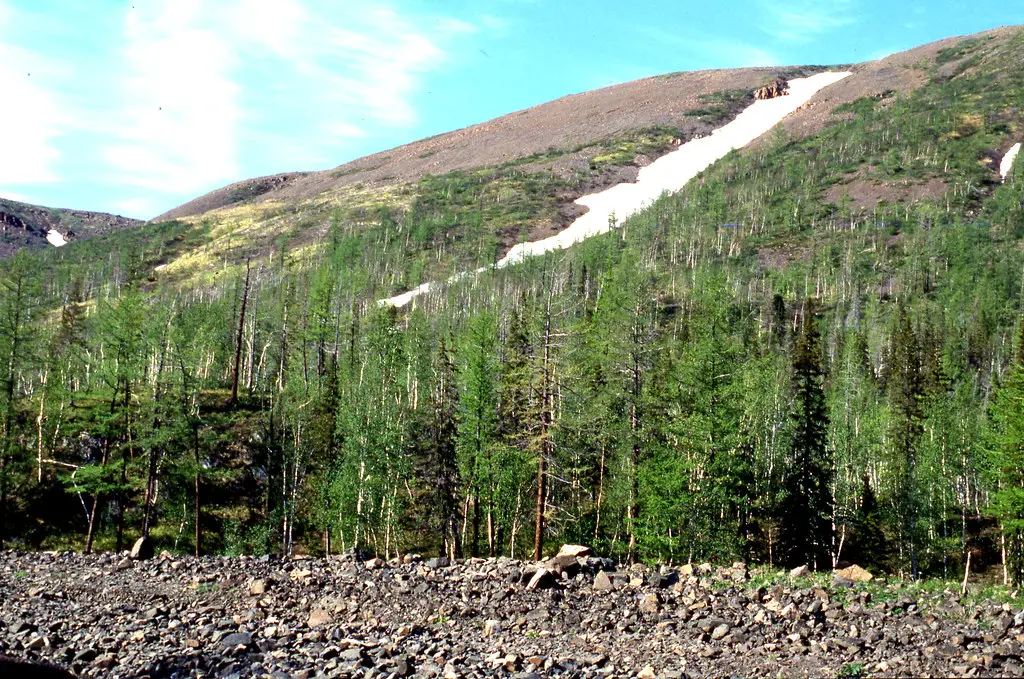The Siberian Larch, a coniferous tree native to the cold, harsh climates of Siberia, is a unique species renowned for its hardiness and adaptability. Unlike many other coniferous species, the Siberian Larch is deciduous, shedding its needles in the autumn. This adaptation enables it to conserve energy during the extreme winters of its native habitat. With its tall, graceful appearance, and beautiful golden fall foliage, Siberian Larch has become an attractive option for landscaping in various parts of the world.
Known for its rot-resistant wood, Siberian Larch has played an essential role in construction, shipbuilding, and various other industries. Its robust wood was even used to construct parts of the city of Venice, Italy. Apart from its commercial applications, the Siberian Larch holds a special cultural and ecological significance in its native regions.
In the Siberian Taiga, the vast stretches of larch forests act as a carbon sink, locking away large amounts of carbon dioxide, and playing a crucial role in the global climate system. The tree’s adaptability to poor soils and its resilience in the face of extreme temperatures make it a species of great interest to botanists and ecologists alike.
| Common Names | Siberian Larch, Russian Larch |
|---|---|
| Botanical Name | Larix sibirica |
| Family | Pinaceae |
| Plant Type | Deciduous coniferous tree |
| Mature Size | 66 to 98 feet tall |
| Sun Exposure | Full sun |
| Soil Type | Well-drained, sandy, acidic to slightly alkaline |
| Hardiness Zones | 2 to 5 |
| Native Area | Siberia, Eastern Russia |
Siberian Larch Care
Caring for Siberian Larch is relatively straightforward due to its robust nature. It thrives best in full sun and well-drained soil. While it can adapt to a variety of soil types, providing it with slightly acidic soil can ensure optimal growth. Regular watering during the early years will promote a deep root system, allowing the tree to withstand drought in the later years.
Avoid planting Siberian Larch in areas with excessive moisture or waterlogged soil as it may lead to root rot. Regular inspections for pests and diseases, coupled with proper pruning techniques, will keep the tree healthy and attractive throughout its life.
Light Requirement for Siberian Larch
The Siberian Larch flourishes in full sun. It needs at least 6 hours of direct sunlight every day for healthy growth and development. Planting it in a location with ample sunlight ensures strong, straight growth and enhances its fall coloration.
Soil Requirements for Siberian Larch
Siberian Larch prefers well-drained, sandy soil with a pH range of 5.5 to 7.0. It can adapt to different soil types, including clayey soil, provided there’s good drainage. Incorporating organic matter can improve soil quality, aiding in better root development.
Water Requirements for Siberian Larch
Regular watering during the early growth stages is essential for Siberian Larch. Once established, it becomes relatively drought-tolerant. Deep watering at longer intervals promotes root growth. Over-watering should be avoided as it may lead to root diseases.
Temperature and Humidity
Siberian Larch is adapted to cold climates and can tolerate temperatures well below freezing. It thrives in hardiness zones 2 to 5. While it is accustomed to the low humidity of Siberian winters, it is also adaptable to varying humidity levels in other regions.
Fertilizer
While Siberian Larch is not particularly demanding in terms of fertilization, applying a balanced slow-release fertilizer in early spring can support growth. Avoid excessive nitrogen as it may lead to weak, leggy growth.
Pruning Siberian Larch
Pruning Siberian Larch should be done in late winter or early spring before new growth begins. Remove dead, damaged, or crossing branches to maintain the tree’s health and appearance. Avoid heavy pruning, as it may stress the tree.
Propagating Siberian Larch
Propagation of Siberian Larch is commonly done through seeds. Cuttings can also be used, though they are generally more challenging to root. Grafting is another method used, especially in commercial nurseries.
How To Grow Siberian Larch From Seed
Growing Siberian Larch from seed requires stratification, a process of chilling the seeds to break dormancy. Sow the seeds in well-drained soil and cover lightly. Maintain consistent moisture during germination. Transplant the seedlings when they reach a manageable size.
Common Pests & Plant Diseases
Aphids
Aphids can be an issue but are usually controlled with natural predators or insecticidal soaps.
Fungal Diseases
Fungal diseases like needle blight may occur in wet conditions. Proper spacing and pruning can prevent these problems.
Common Problems With Siberian Larch
Poor Drainage
Poor drainage can lead to root rot. Ensure the planting site has good drainage to prevent this issue.
Nutrient Deficiency
Yellowing needles may indicate a nutrient deficiency. Regular soil tests and balanced fertilization can rectify this problem.
Wind Damage
Siberian Larch can be susceptible to wind damage. Planting in a sheltered location or providing windbreaks can help.
Pro Tips
- Plant Siberian Larch in a sunny location with good drainage.
- Regular inspection and timely pruning can prevent many common problems.
- Provide deep watering during the early growth stages.
- Consider the mature size of the tree when selecting the planting location.
- Utilize the wood’s rot-resistant properties for various outdoor applications.



